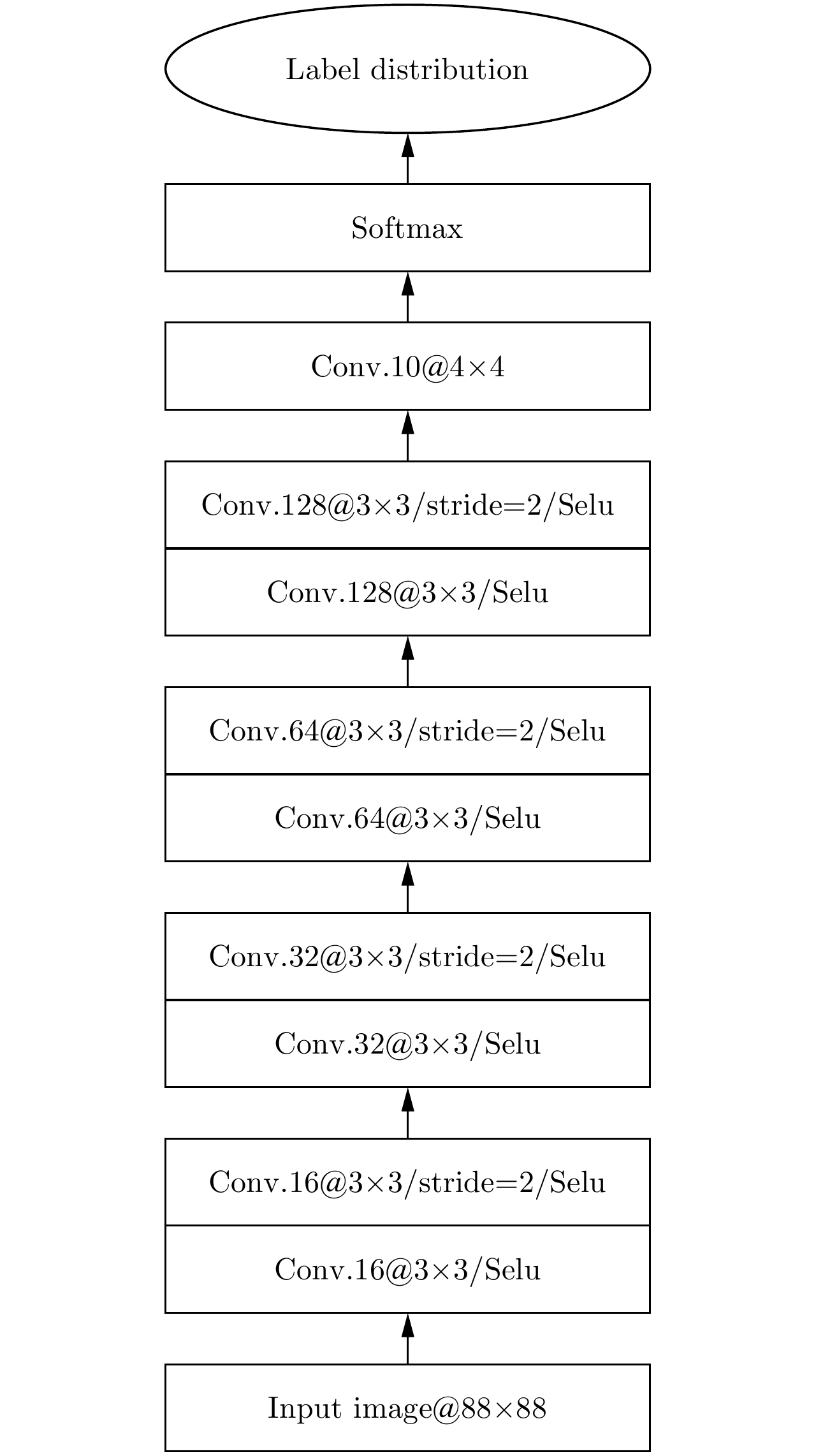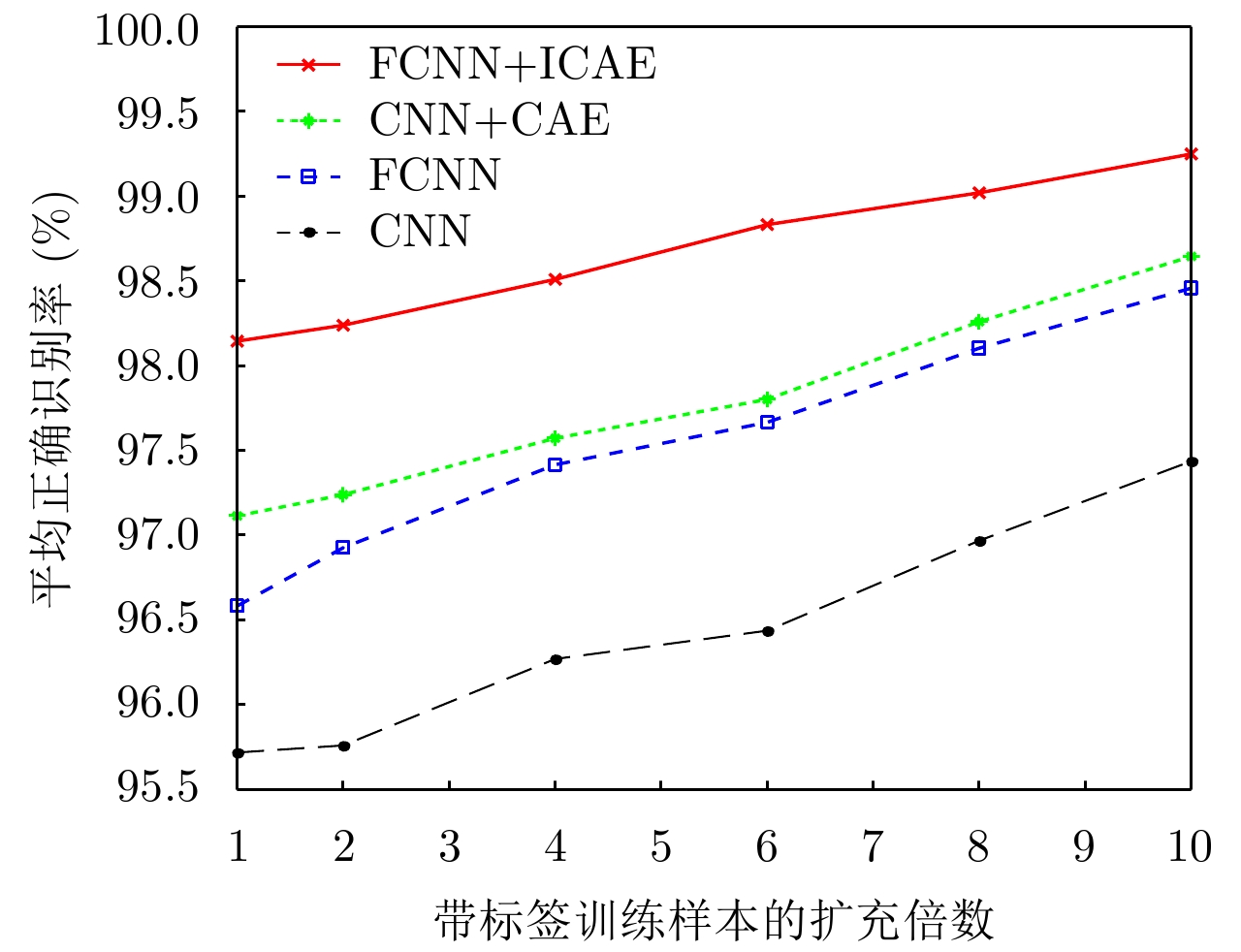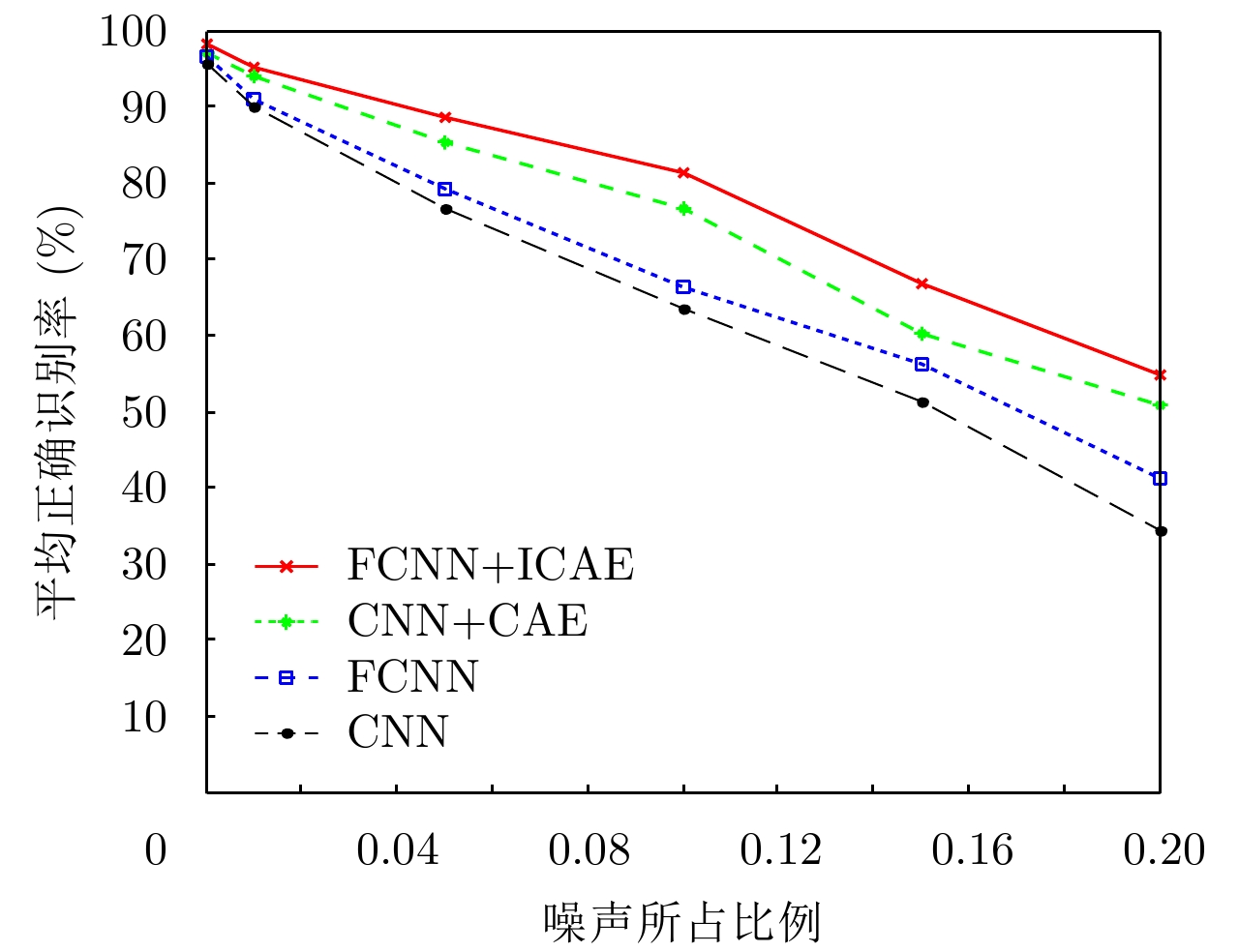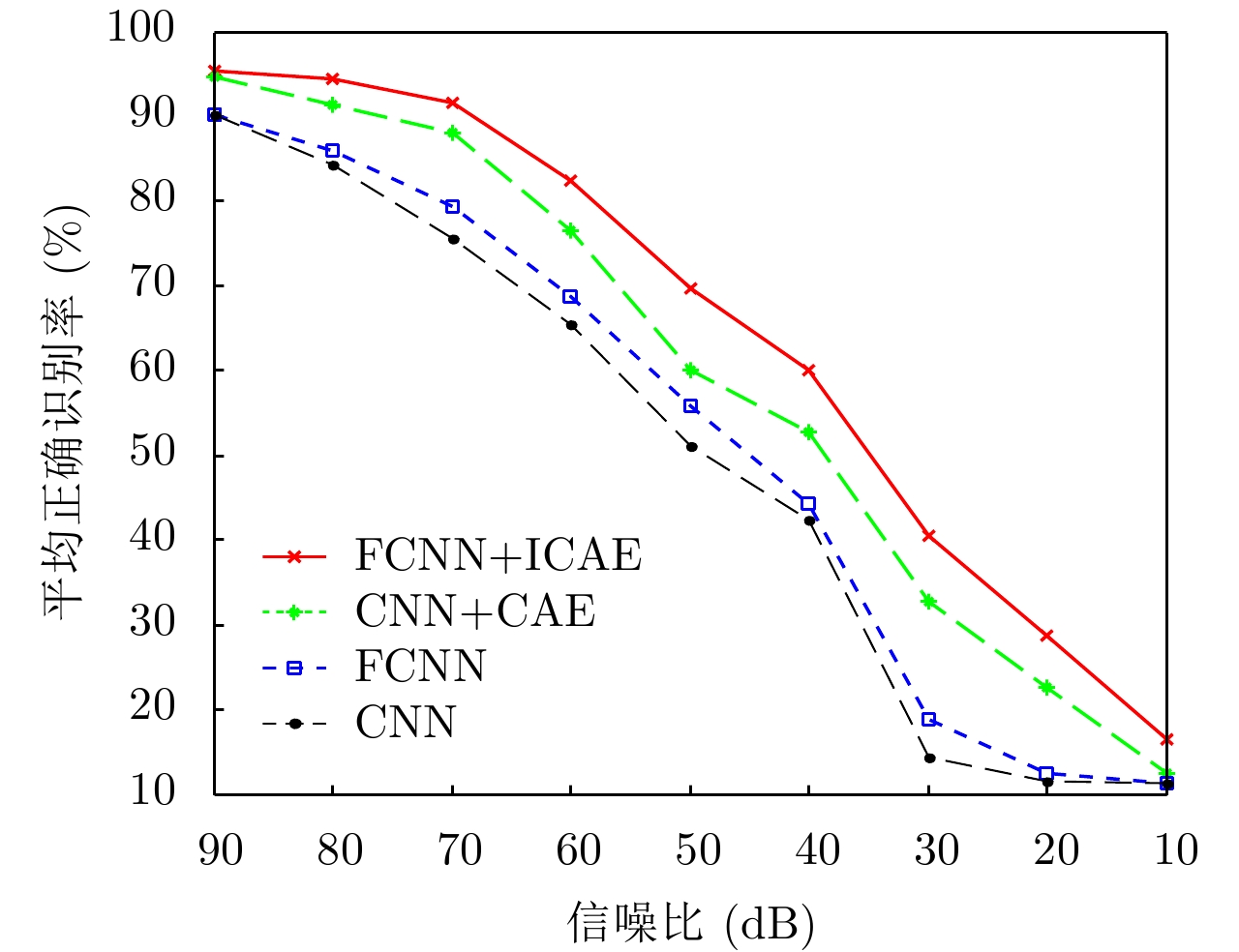| [1] |
Wagner S A. SAR ATR by a combination of convolutional neural network and support vector machines[J]. IEEE Transactions on Aerospace and Electronic Systems, 2016, 52(6): 2861–2872. DOI: 10.1109/TAES.2016.160061 |
| [2] |
Chen S Z, Wang H P, Xu F, et al. Target classification using the deep convolutional networks for SAR images[J]. IEEE Transactions on Geoscience and Remote Sensing, 2016, 54(8): 4806–4817. DOI: 10.1109/TGRS.2016.2551720 |
| [3] |
Zhang Z M, Wang H P, Xu F, et al. Complex-valued convolutional neural network and its application in polarimetric SAR image classification[J]. IEEE Transactions on Geoscience and Remote Sensing, 2017, 55(12): 7177–7188. DOI: 10.1109/TGRS.2017.2743222 |
| [4] |
Furukawa H. Deep learning for target classification from SAR imagery: Data augmentation and translation invariance[J]. IEICE Technical Report, 2017, 117(182): 13–17.
|
| [5] |
徐丰, 王海鹏, 金亚秋. 深度学习在SAR目标识别与地物分类中的应用[J]. 雷达学报, 2017, 6(2): 136–148. DOI: 10.12000/JR16130Xu Feng, Wang Haipeng, and Jin Yaqiu. Deep learning as applied in SAR target recognition and terrain classification[J]. Journal of Radars, 2017, 6(2): 136–148. DOI: 10.12000/JR16130 |
| [6] |
Morgan D A E. Deep convolutional neural networks for ATR from SAR imagery[C]. Proceedings of SPIE 9475, Algorithms for Synthetic Aperture Radar Imagery XXII, Baltimore, Maryland, United States, 2015: 94750F.
|
| [7] |
Profeta A, Rodriguez A, and Clouse H S. Convolutional neural networks for synthetic aperture radar classification[C]. Proceedings of SPIE 9843, Algorithms for Synthetic Aperture Radar Imagery XXIII, Baltimore, Maryland, United States, 2016: 98430M.
|
| [8] |
Wilmanski M, Kreucher C, and Lauer J. Modern approaches in deep learning for SAR ATR[C]. Proceedings of SPIE 9843, Algorithms for Synthetic Aperture Radar Imagery XXIII, Baltimore, Maryland, United States, 2016: 98430N.
|
| [9] |
Wagner S. Combination of convolutional feature extraction and support vector machines for radar ATR[C]. Proceedings of the 17th International Conference on Information Fusion, Salamanca, Spain, 2014: 1–6.
|
| [10] |
Pei J F, Huang Y L, Huo W B, et al. SAR automatic target recognition based on multiview deep learning framework[J]. IEEE Transactions on Geoscience and Remote Sensing, 2018, 56(4): 2196–2210. DOI: 10.1109/TGRS.2017.2776357 |
| [11] |
Lin Z, Ji K F, Kang M, et al. Deep convolutional highway unit network for SAR target classification with limited labeled training data[J]. IEEE Geoscience and Remote Sensing Letters, 2017, 14(7): 1091–1095. DOI: 10.1109/LGRS.2017.2698213 |
| [12] |
Chen S Z and Wang H P. SAR target recognition based on deep learning[C]. Proceedings of 2014 International Conference on Data Science and Advanced Analytics, Shanghai, China, 2015: 541–547.
|
| [13] |
El Housseini A, Toumi A, and Khenchaf A. Deep learning for target recognition from SAR images[C]. Proceedings of 2017 Seminar on Detection Systems Architectures and Technologies, Algiers, Algeria, 2017: 1–5.
|
| [14] |
田壮壮, 占荣辉, 胡杰民, 等. 基于卷积神经网络的SAR图像目标识别研究[J]. 雷达学报, 2016, 5(3): 320–325. DOI: 10.12000/JR16037Tian Zhuangzhuang, Zhan Ronghui, Hu Jiemin, et al. SAR ATR based on convolutional neural network[J]. Journal of Radars, 2016, 5(3): 320–325. DOI: 10.12000/JR16037 |
| [15] |
Springenberg J T, Dosovitskiy A, Brox T, et al.. Striving for simplicity: The all convolutional net[OL]. arXiv preprint arXiv:1412.6806, 2015.
|
| [16] |
Hinton G E and Salakhutdinov R R. Reducing the dimensionality of data with neural networks[J]. Science, 2006, 313(5786): 504–507. DOI: 10.1126/science.1127647 |
| [17] |
康妙, 计科峰, 冷祥光, 等. 基于栈式自编码器特征融合的SAR图像车辆目标识别[J]. 雷达学报, 2017, 6(2): 167–176. DOI: 10.12000/JR16112Kang Miao, Ji Kefeng, Leng Xiangguang, et al. SAR target recognition with feature fusion based on stacked autoencoder[J]. Journal of Radars, 2017, 6(2): 167–176. DOI: 10.12000/JR16112 |
| [18] |
赵飞翔, 刘永祥, 霍凯. 基于栈式降噪稀疏自动编码器的雷达目标识别方法[J]. 雷达学报, 2017, 6(2): 149–156. DOI: 10.12000/JR16151Zhao Feixiang, Liu Yongxiang, and Huo Kai. Radar target recognition based on stacked denoising sparse autoencoder[J]. Journal of Radars, 2017, 6(2): 149–156. DOI: 10.12000/JR16151 |
| [19] |
Masci J, Meier U, Cireşan D, et al.. Stacked convolutional auto-encoders for hierarchical feature extraction[C]. Proceedings of the 21st International Conference on Artificial Neural Networks on Artificial Neural Networks and Machine Learning – ICANN 2011, Espoo, Finland, 2011: 52–59.
|
| [20] |
Vincent P, Larochelle H, Bengio Y, et al.. Extracting and composing robust features with denoising autoencoders[C]. Proceedings of the 25th International Conference on Machine Learning, Helsinki, Finland, 2008: 1096–1103.
|
| [21] |
Rumelhart D E, Hinton G E, and Williams R J. Learning representations by back-propagating errors[J]. Nature, 1986, 323(6088): 533–536. DOI: 10.1038/323533a0 |
| [22] |
Klambauer G, Unterthiner T, Mayr A, et al.. Self-normalizing neural networks[C]. Proceedings of the 31st Neural Information Processing Systems, Long Beach, CA, United States, 2017: 972–981.
|
| [23] |
Kingma D P and Ba J L. Adam: A method for stochastic optimization[OL]. arXiv preprint arXiv:1412.6980, 2015.
|
| [24] |
Dong G G, Wang N, and Kuang G Y. Sparse representation of monogenic signal: With application to target recognition in SAR images[J]. IEEE Signal Processing Letters, 2014, 21(8): 952–956. DOI: 10.1109/LSP.2014.2321565 |




 Submit Manuscript
Submit Manuscript Peer Review
Peer Review Editor Work
Editor Work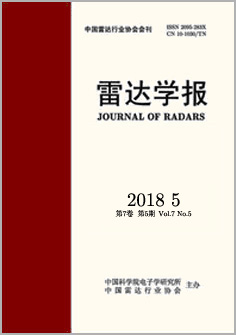





 DownLoad:
DownLoad:
